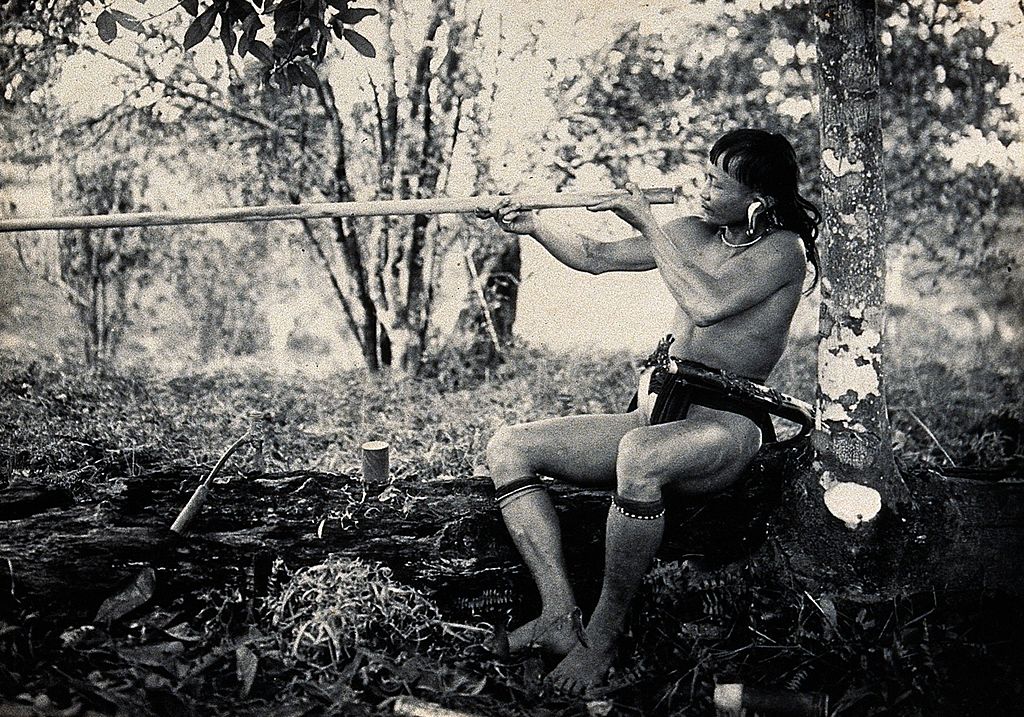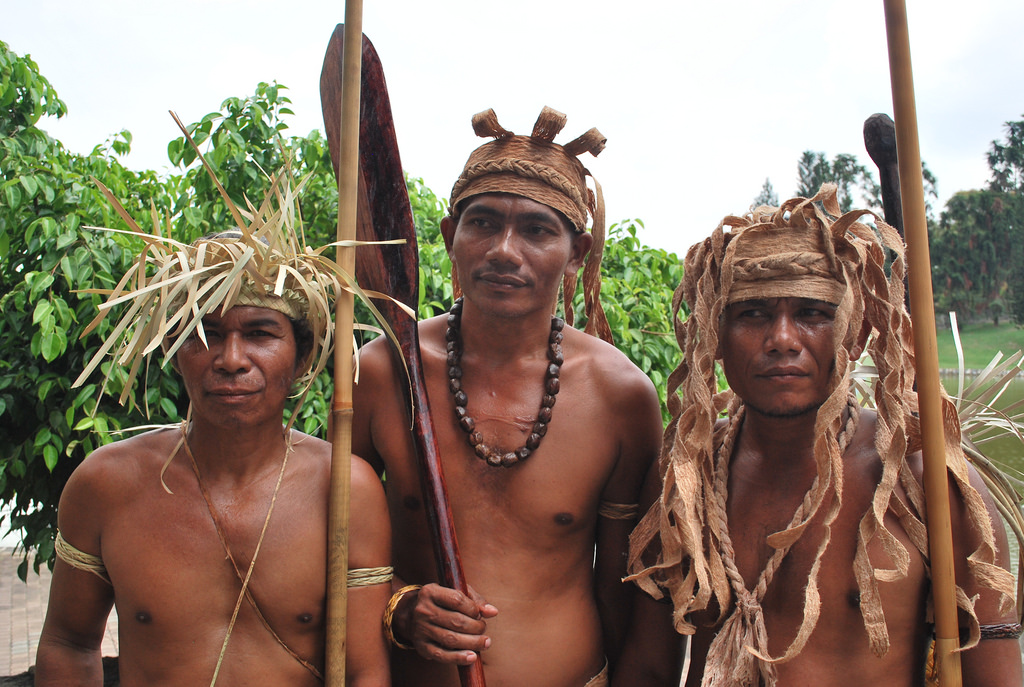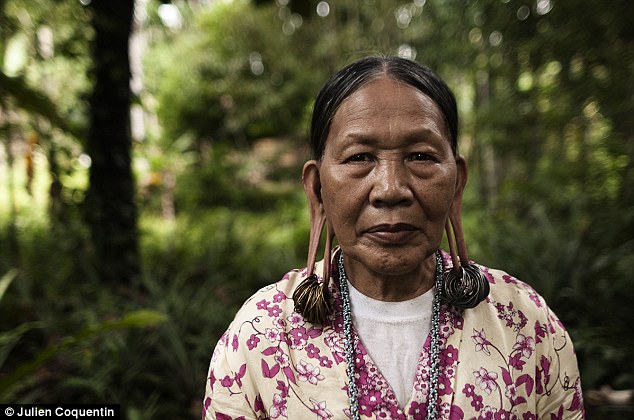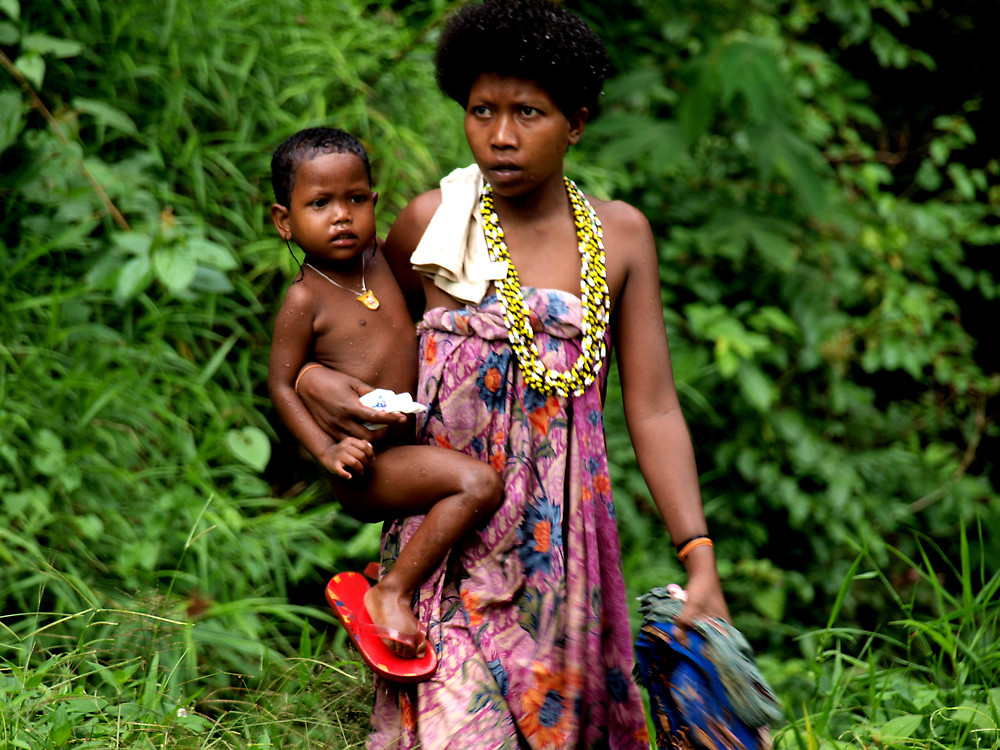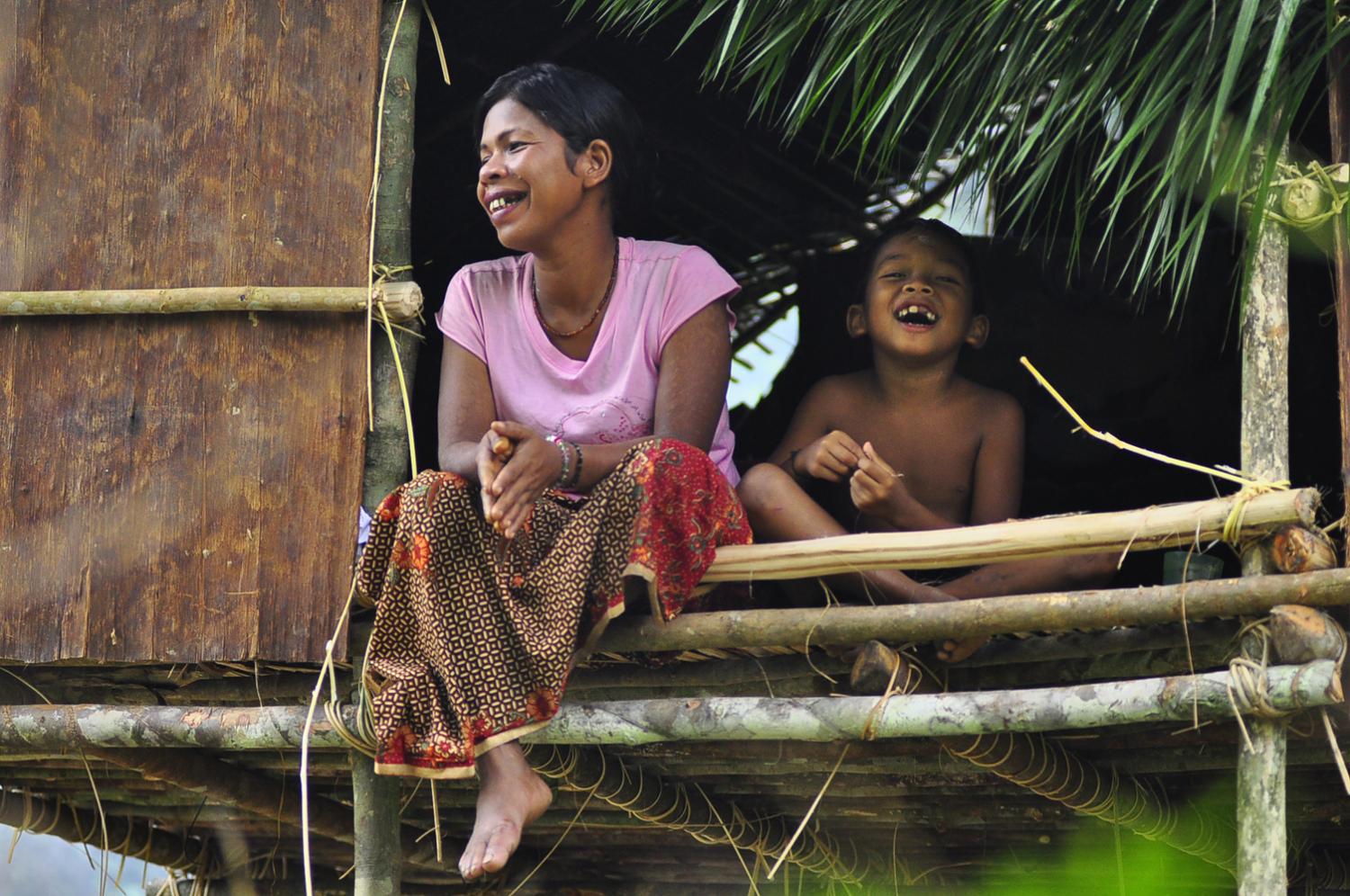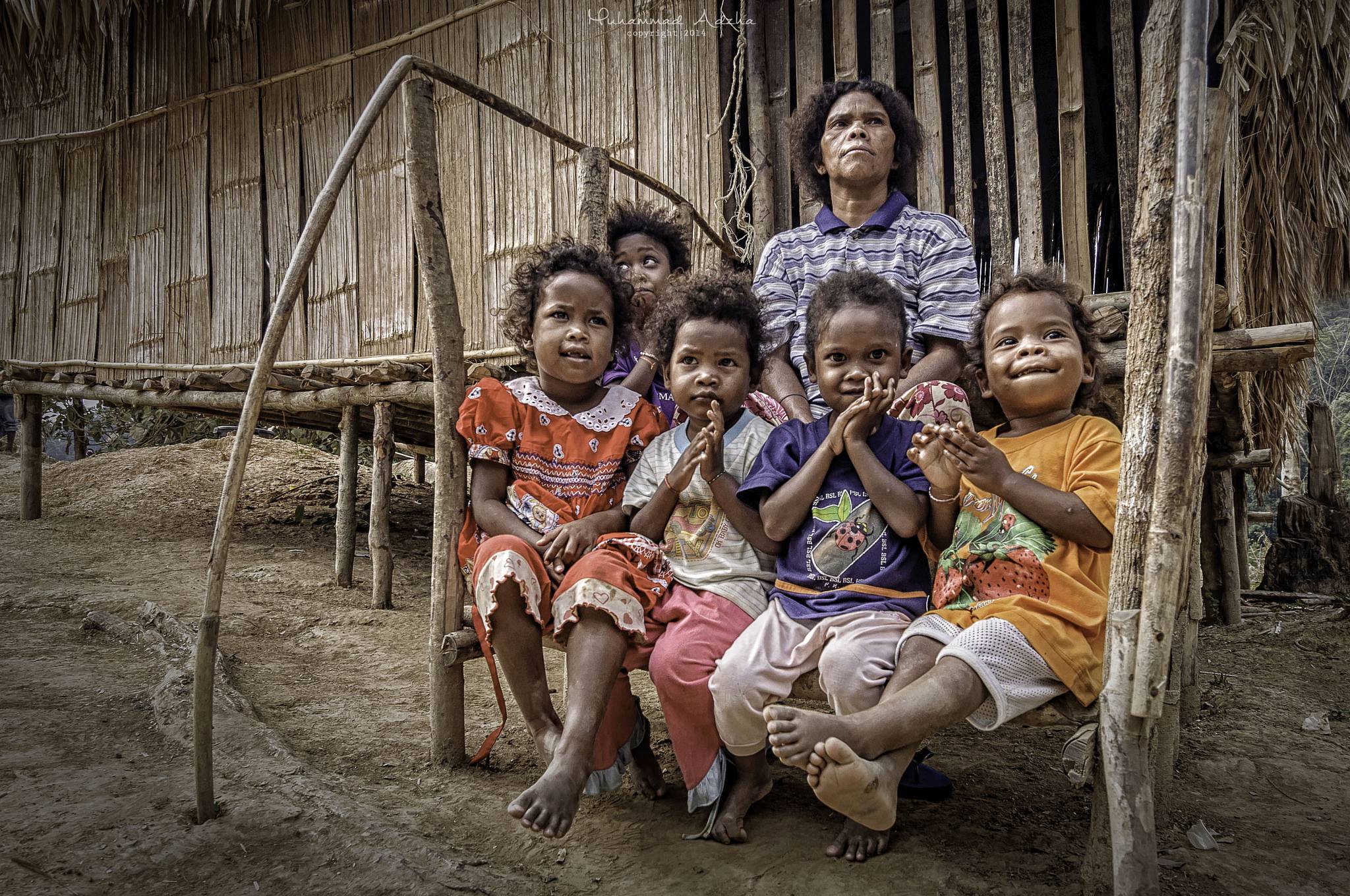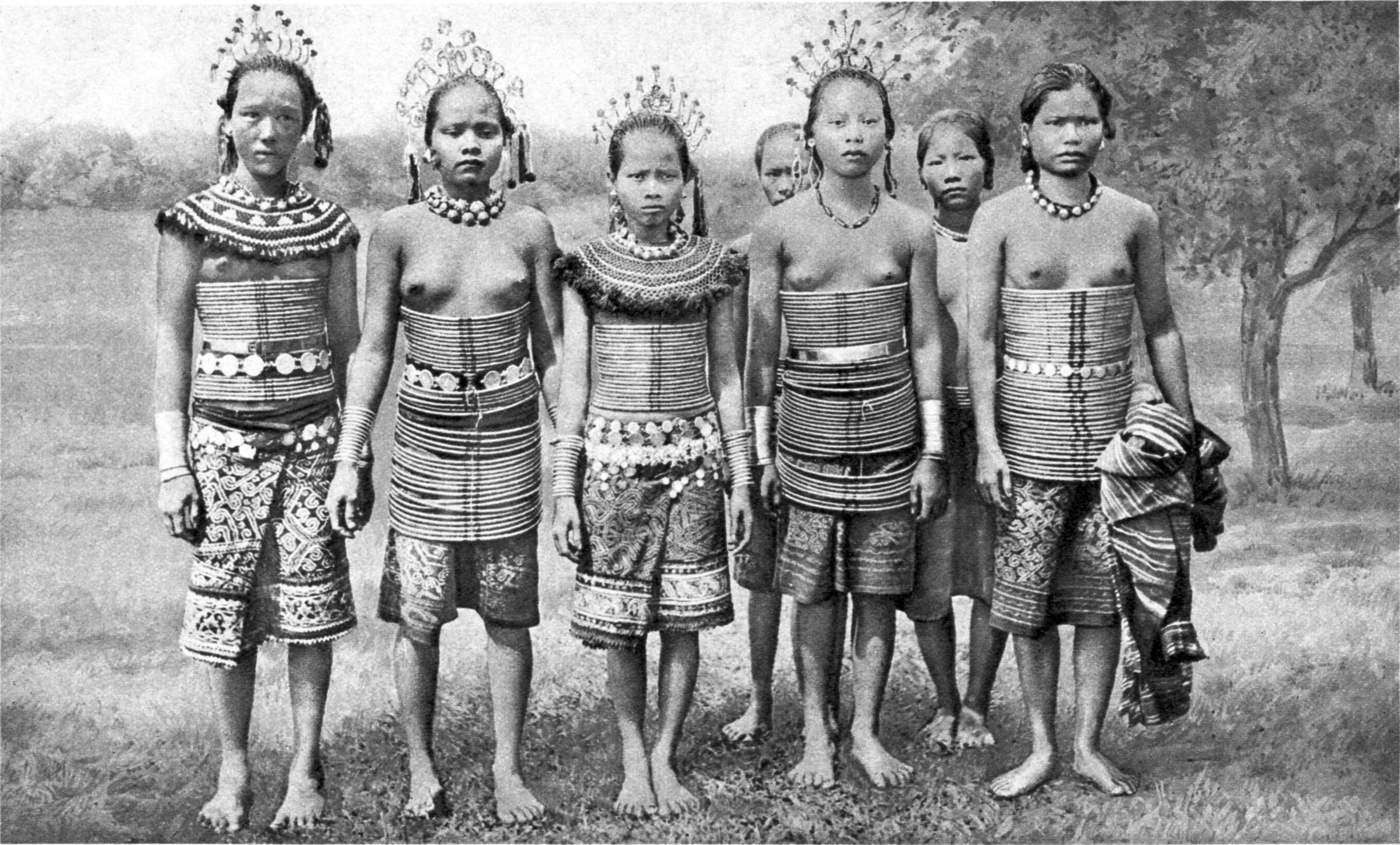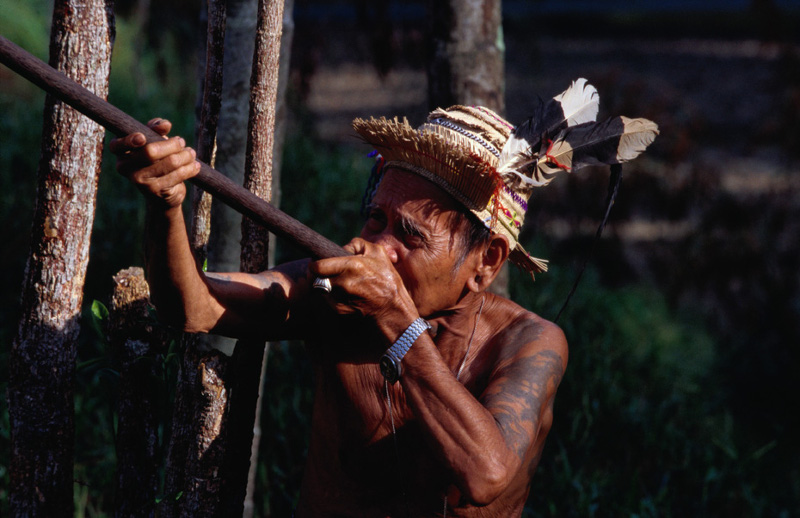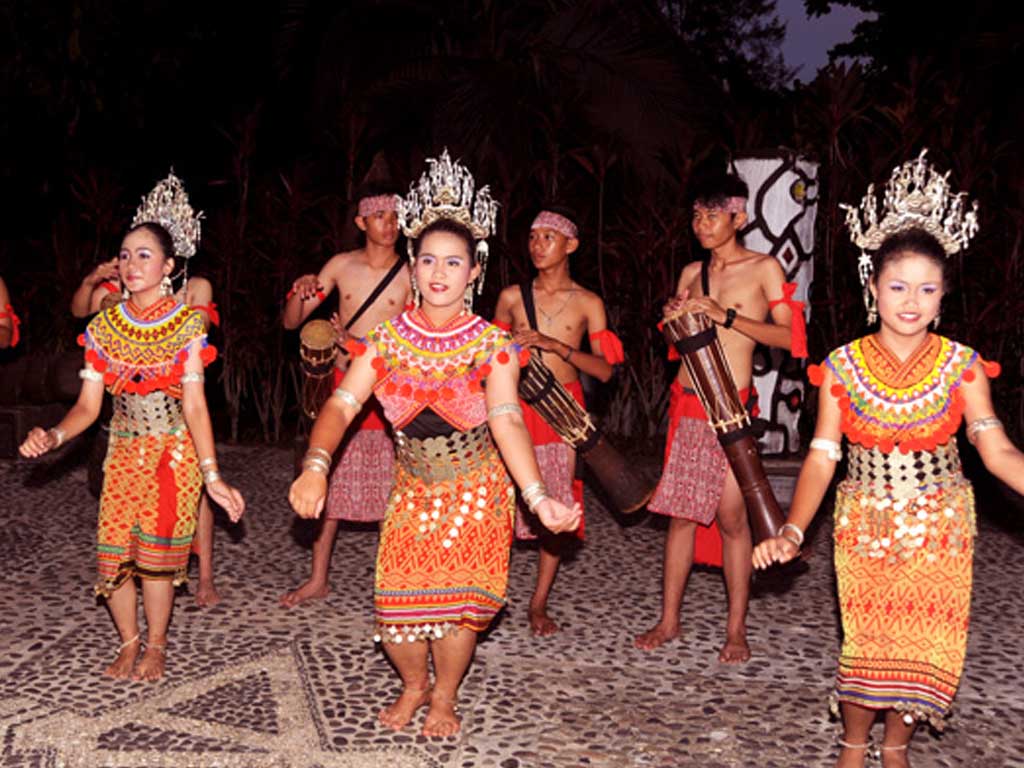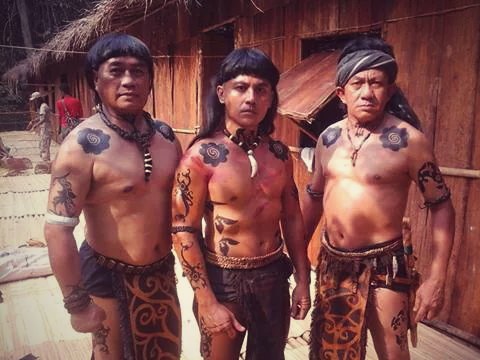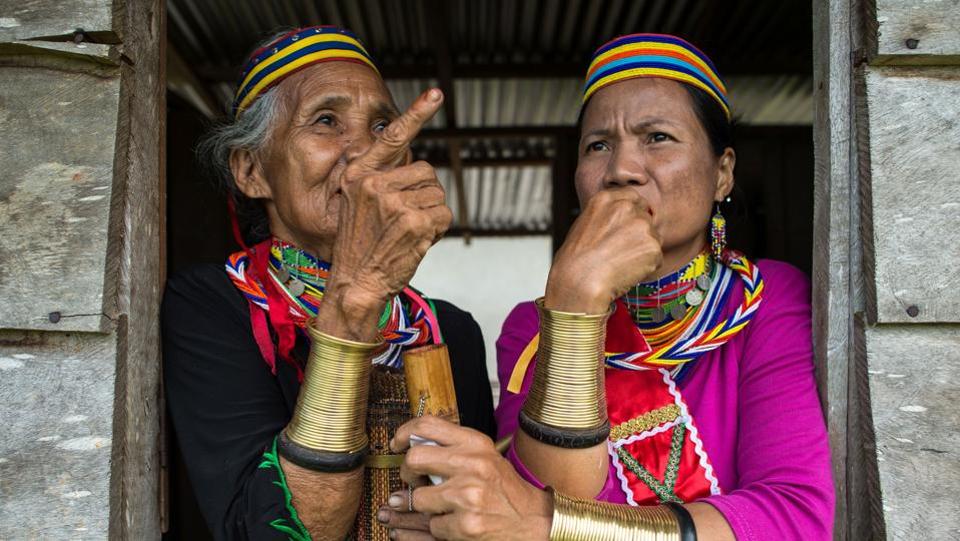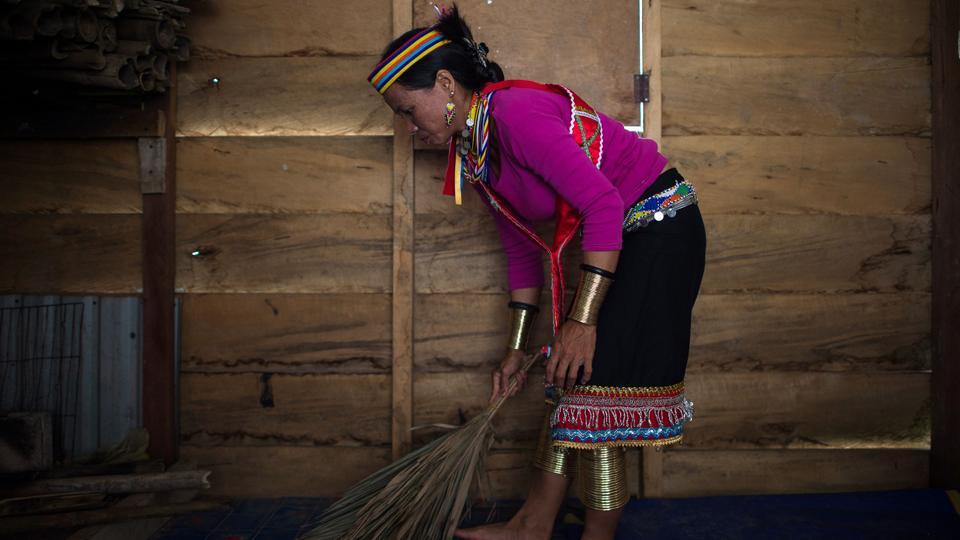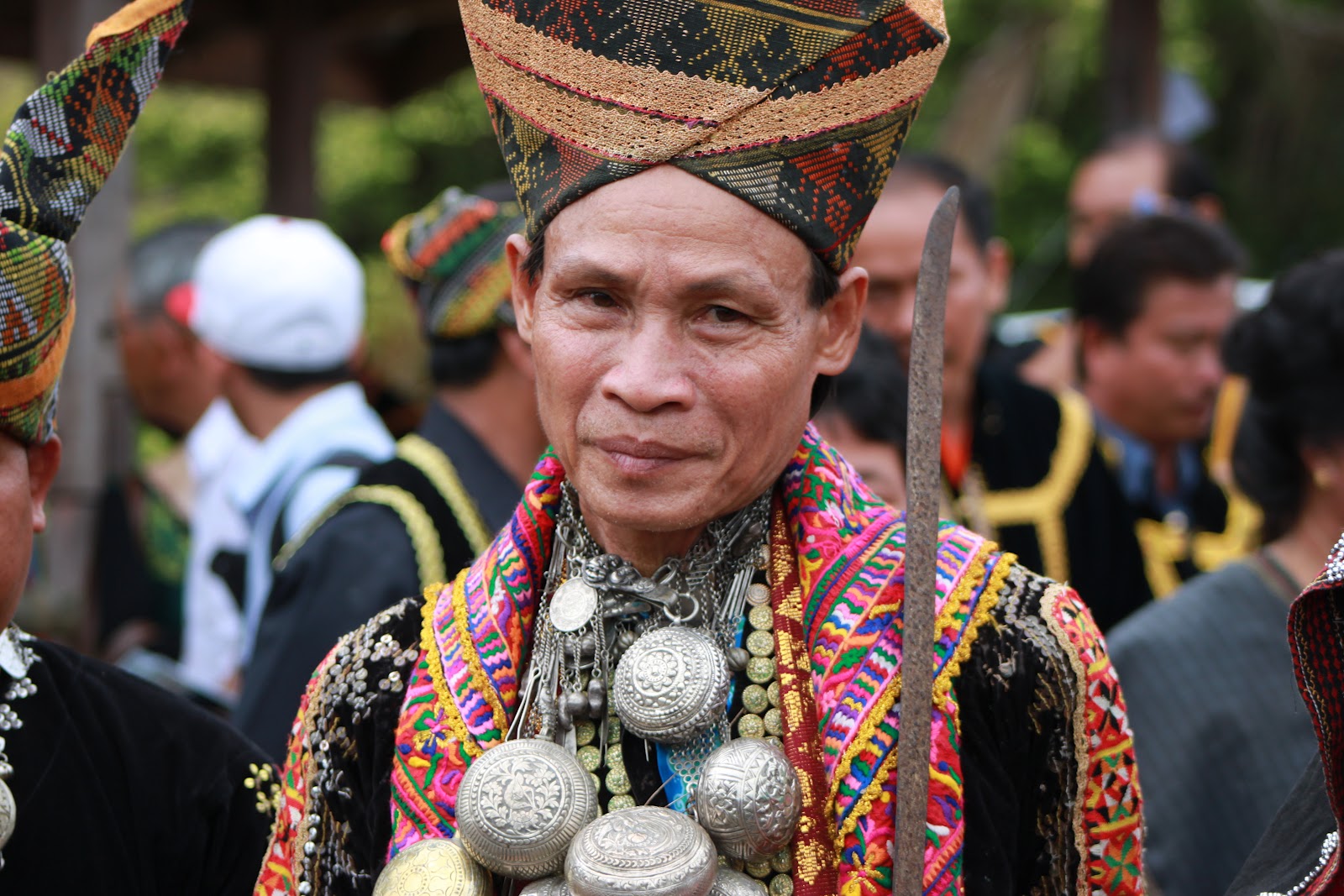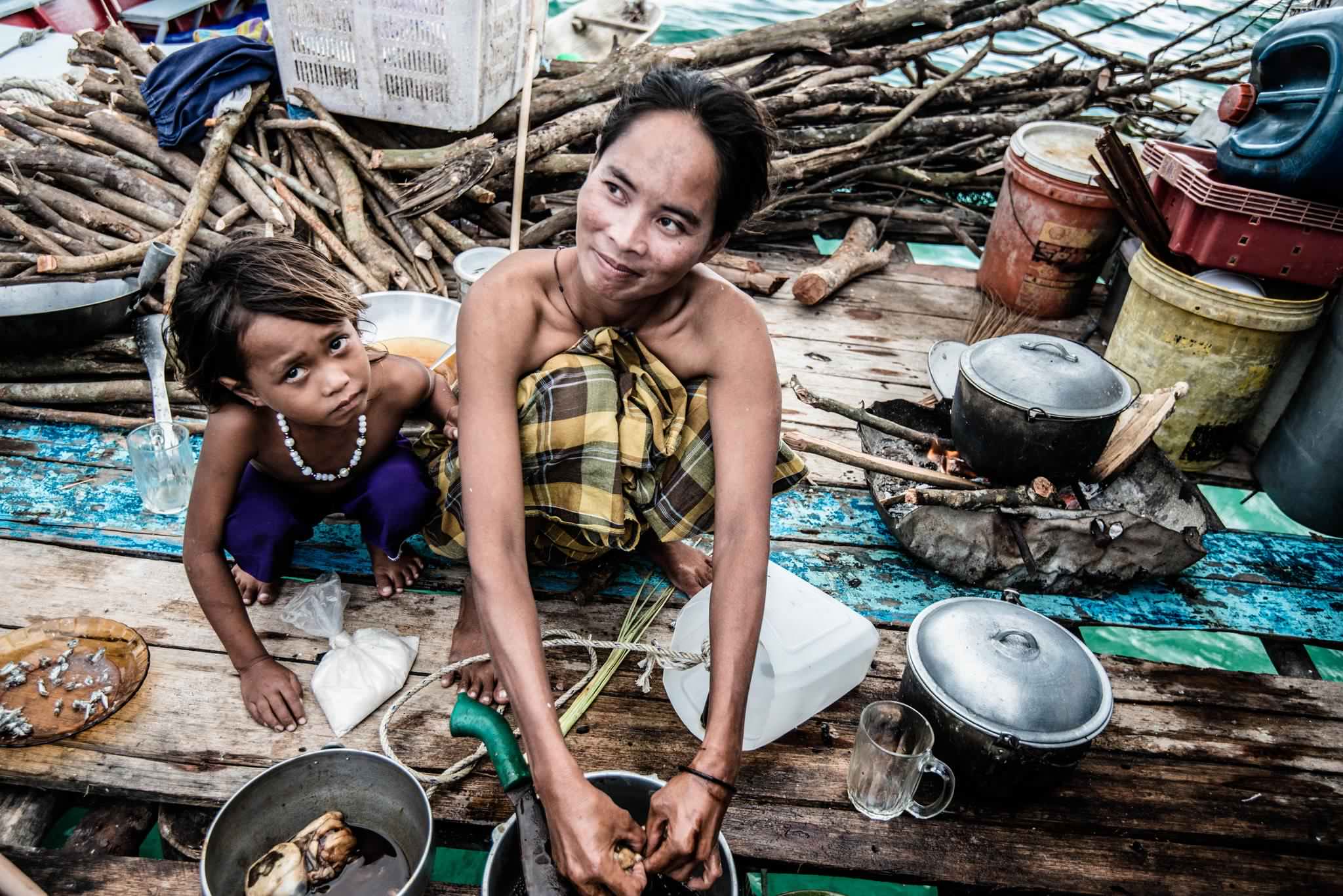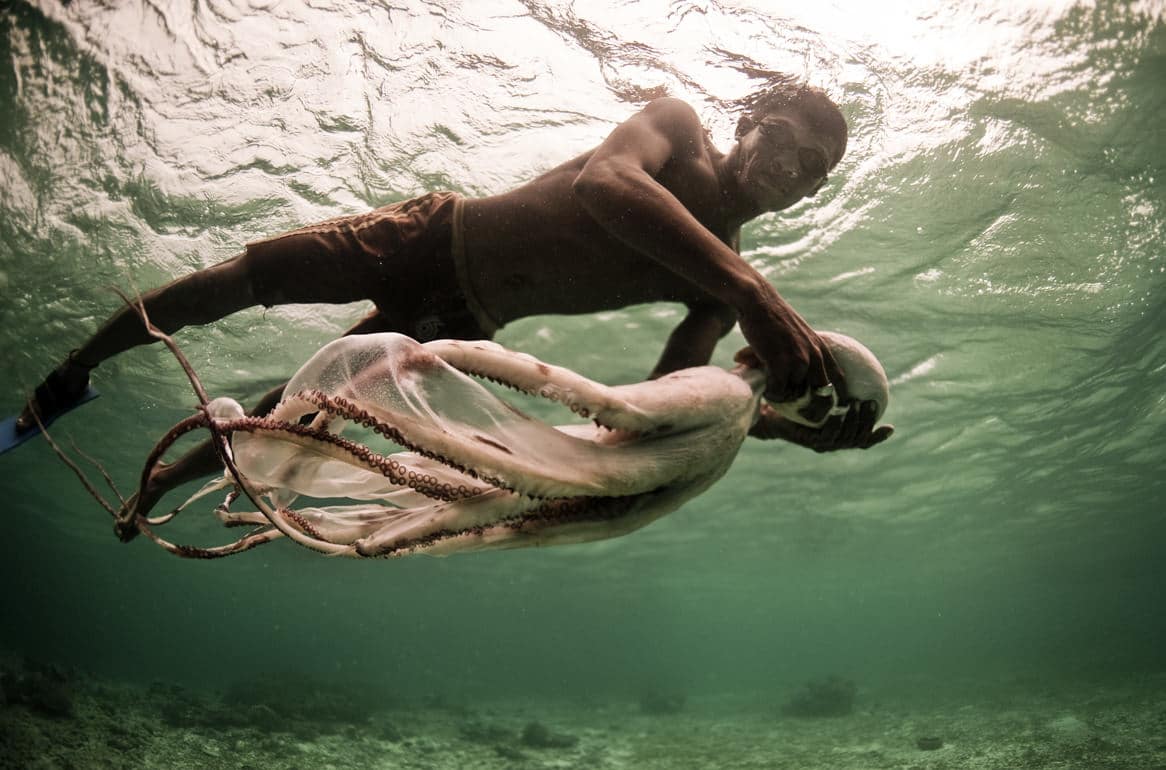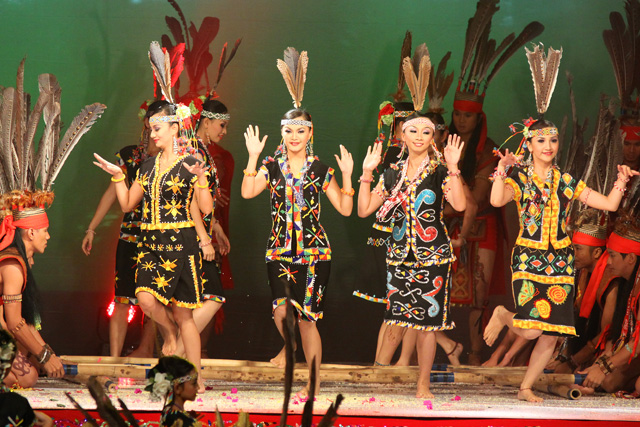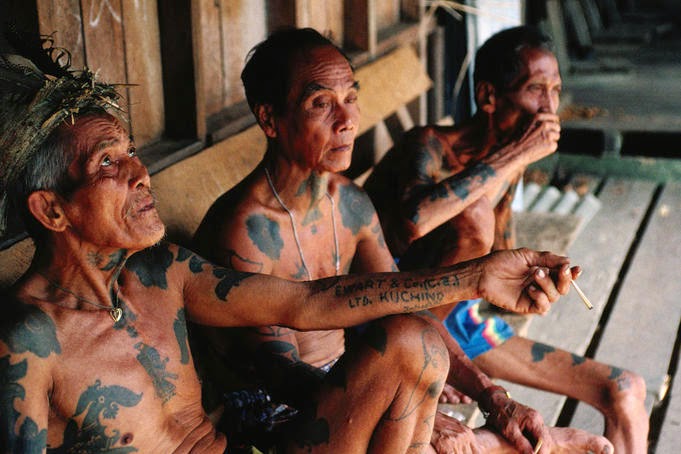The 101 On Malaysia's Orang Asli & Native Community. They're More Diverse Than We Think!
More than just "lain-lain".
The indigenous people of Malaysia are some of the oldest inhabitants of the land. Their historically-rich, mysterious lifestyles, and cultures have been the subject of fascination to many.
An undated photo of a Kenyah native man testing the bore of his blowpipe.
Image via Wikimedia CommonsFrom the more popular Orang Asli, Iban, and Dusun community, to the lesser known Lun Bawang people, they are usually just referred to as 'dan lain-lain' (others).
Our history textbooks don't exactly go into details about them either.
The indigenous community in Malaysia is mainly divided by the Orang Asli who are native to Peninsular Malaysia, and the other native tribes that live in Sabah and Sarawak.
There are about 3,652,096 indigenous people in Malaysia and they make up 11.8% of the local population.
The Orang Asli of Peninsular Malaysia
The literal translation of the Malay term 'Orang Asli' is 'original people'. The Orang Asli are generally classified under three main groups - Negrito (Semang), Senoi, and Proto-Malay (aboriginal Malay), with about 18 ethnic groups under them, collectively.
The three main groups of Orang Asli mostly live in different parts of Peninsular Malaysia, namely:
1. Negrito - northern region.
2. Senoi - central region.
3. Proto-Malay - southern region.
Bateq, Jahai, Kensiu, Kintaq, Lanoh, and Mendriq are some of the ethnic groups under Negrito Orang Asli, while the Senoi group is made up of a few other ethnic divisions including the Mah Meri, Jah Hut, Chewong, Temiar, Semai, and Semaq Beri people. As for the Proto-Malay group, there's Orang Kanaq, Orang Kuala, Orang Seletar, Semelai, Jakun, Temoq, and the Temuan people.
Altogether, there are about 205,000 Orang Asli living in various parts of Peninsular Malaysia now, representing about 0.84% of the national population.
What languages do they speak?
Despite the fact that the Orang Asli are grouped together, they are not a homogenous group. Linguistically, the Orang Asli are divided into two groups, one that speaks Austroasiatic languages and the other that's made up of Austronesian-speaking people.
Most of the Senoi and Negrito groups speak Aslian languages, which is a subdivision of Austroasiatic languages. The Austroasiatic language family has around 169 languages that are spoken mainly in Southeast Asia.
The Proto-Malay people speak Austronesian languages, except for Semelai and Temoq people who speak dialects which are Austroasiatic. Austronesian is the largest language family in the world. There are about 1,200 languages that fall under this language group including Malay, with speakers spread from Madagascar all the way to Hawaii in the north, and Southeast Asia.
Where do most of the Orang Asli community live at and what kind of lifestyles do they lead?
A large chunk of the Orang Asli people live in or close to forests, with about 60% of them living in the forest-fringe or rural areas in the country, while about 30% live in the forest interiors. Only about 1% of the Orang Asli community lives in settlements or areas close to urban centres.
The Semai, Temiar, Chewong, Jah Hut, Semelai, and Semoq Beri people mainly live very close to or within the forest areas, with most of them involved in hill paddy cultivation, hunting, and fishing. They also engage in trading activities for petai, durian, rattan, and resins.
Meanwhile, the Orang Laut, Orang Seletar, and Mah Meri typically live close to the coast and are skilled seafarers.
Here's a brief explanation on where these Orang Asli groups live at and how they earn a living:
Negrito
The Negritos of Malaysia, also known as the Semang people, can mostly be found in Perak, Pahang, and Kedah, where they are also known as 'sakai'. Sakai means 'debt slaves' and it is a derogatory term used to refer to the Orang Asli people in these areas. In the 18th and 19th century, quite a number of Orang Asli people were used as slaves, with many regarding them as "savages" and "jungle-beasts".
The Negritos from Kelantan and Terengganu are usually referred to as 'Pangan', which means forest people.
Ethnologically described as nomadic hunter-gatherers, most Semang still opt to lead semi-nomadic lifestyle, mostly relying on the bounties of the forests and seas.
Senoi
The Senoi community can be found in the central region of Peninsular Malaysia but quite a number of them have moved to Cameron Highlands, Pahang.
They can usually be found living in long community houses, constructed of bamboo, rattan, and thatch, held away from the ground on poles. They grow, among other things, rice, bananas, bread-fruit trees and pumpkins. They are mainly vegetarians, but fish and certain forest animals are also on the menu.
With Cameron Highlands being a popular tourist spot, the Senoi people make use of their talents and expertise to carve blowpipes, weave baskets, and other souvenirs to sell it at the markets there. Some of the Senoi people also work in the plantations in Cameron Highlands.
Proto-Malay
This group of Orang Asli people can mostly be found along the Strait of Melaka and in southern Johor. Said to be similar in appearance to the Malay people, parts of the Proto-Malay community have assimilated into the local Malay community through interracial marriages.
However, people from the Jakun and Temuan community are still mainly involved in agriculture, with some even managing their own rubber, oil palm, or cocoa farms.
What kind of religions do the Orang Asli subscribe to?
Almost 70% of the Orang Asli community are traditionally animists, while 20% of them are Muslims (the numbers are growing slowly, especially among the Proto-Malay community), and the remaining 10% are Christians.
Animism is the religious belief that objects, places, and creatures all have a distinct spiritual essence. It attributes living souls to plants, inanimate objects, and natural phenomenon and it said to be oldest known type of belief system that even predates paganism.
The information above on the Orang Asli community was obtained from the Center For Orang Asli Concerns (COAC) website and the World Directory of Minorities and Indigenous Peoples.
What about the indigenous community in Sarawak?
Iban women from Rejang, Sarawak, wearing rattan corsets decorated with brass rings and filigree adornments, circa 1910.
Image via Charles Hose/PinterestThe indigenous people make up the majority of the state's population at around 1,899,600 people or 70.1%
With its highly diverse demographics, Sarawak has around 40 sub-ethnic groups and each has its own unique culture, lifestyle, and language. These native tribes are informally referred to as the Dayak people and the biggest ethnic group within the Dayak community is Iban - they constitute about 30% of the population.
There's also Bidayuh, Orang Ulu, Kayan, Lun Bawang, Kelabit, Kenyah, Penan, Sebup, Bisaya, Melanau, Murut, Penan, Punan Bah, Berawan, and other minor ethnic groups that are part of the Sarawak indigenous population. Dayak languages are categorised under Austronesian languages.
Let's take a look at the brief history of four of the largest indigenous tribes in Sarawak.
1. Iban - the largest ethnic group in the Land of the Hornbills
Also known as Sea Dayaks during the British colonial days, the Iban community are historically renowned for their ancient headhunting practices and for being a fiercely loyal warring tribe during the olden days.
Their excellent headhunting and tracking skills also came in handy during the Japanese occupation in the 1940s. Many Iban warriors fought against Japanese soldiers during military operations, and 14 of them were awarded with medals for helping to liberate the nation from communists.
Traditionally, Ibans live in communal structures referred to as longhouses (rumah panjai) but today many of these longhouses are equipped with modern facilities like washing machines, telephone lines, and the Internet. However, note that there are still many Ibans who choose to live in their native lands. Sadly, these rural areas lack basic necessities such as running water and electricity.
Despite the fact that the Iban people speak various dialects that are divided according to the locations where they reside, the dialects are usually mutually intelligible.
One of the most notable festivals that the Ibans and other Dayak people celebrate would be Gawai Dayak, an annual festival that falls on 1 June
Gawai Dayak literally translates into 'Dayak Festival' and it is a harvest festival that celebrates harmony, unity, and the end of the harvest season, while ushering in another season of bountiful goodness.
Preparations for Gawai Dayak begins on 31 May, where the celebrations typically start with a ceremony called 'Muai Antu Rua' to cast away the spirit of greediness, thus signifying the non-interference of the spirit of bad luck in the upcoming celebrations.
At the stroke of midnight, a gong is sounded and the tuai rumah (the chief of the longhouse) will lead everyone to make a toast, wishing each other 'gayu-guru, gerai nyamai' (long life, health, and prosperity).
What follows is a number of activities and celebrations including dancing coupled with traditional music, poetry recitals, cock-fighting, blowpipe demonstrations, and ngajat competitions, to name a few. A variety of traditional dishes such as penganan iri (discus-shaped cake made out of rice flour, coconut milk, and sugar) and ayam pansuh (chicken cooked in bamboo) too will be served.
The Ibans also celebrate other festivals including festivals for war, procreation, health, healing, and weaving rituals.
Note: While the Iban ancestors have practiced animistic beliefs for centuries now, there are quite a number of them that have turned to mainly Christianity, and a smaller group that has converted to Islam. Despite the conversion, the Iban people are mostly known to respect their cultural festivals and typically return to their ancestral villages to participate in these festivals, like Gawai Dayak.
Apart from headhunting, the Ibans are also well known for their intricately designed, hand-tapped tattoos
They believe that the tattoos have protective powers in the form of charms that are given by antu (spirits) through dreams, when one is asleep. Ibans without tattoos are believed to be virtually invisible to gods, as the spirits attached to these tattoos allow the men to be seen by their gods.
The Iban community believe that the traditional hand-tapped tattoos have the ability to intimidate evil spirit and is a language on its own. The tattoos are usually the combination of human, animal, and plant images in a single design, expressing the integration of all living things in the world.
The most basic type of Iban tattoo is the bunga terung design, which is usually the first tattoo that a man gets before going on his bejalai or coming-of-age ceremony.
2. Bidayuh - the second largest Dayak ethnic group in Sarawak
The Bidayuh, also known as the 'Land Dayak', is the second largest indigenous group in Sarawak. Bidayuh means 'inhabitants of the land' and they make up about 8% of the Sarawak population.
Concentrated mainly on the far west of Sarawak, most rural Bidayuh villages can be found in the rural areas of Lundu, Bau, Padawan, Siburan, Penrissen, and Serian. The rural Bidayuh community traditionally practice shifting rice cultivation, however, in recent times, they have moved to be involved with producing cash crops like rubber, cocoa, pepper, and palm oil.
The Bidayuh community speak a number of different dialects that falls under the Biatah language, including Sadong, Singai-Jagoi, Salako, and Lara to name a few.
Like the Ibans and most other indigenous communities, the Bidayuhs are traditionally animists but in the recent years, a large number of them have adopted the Christian faith.
If the Ibans are known for their beautiful traditional tattoos, then Bidayuhs can be identified by their majestic ruyang and rusung - coiled rings made out of copper and brass that are worn on the forearms and calves, respectively. Among the Semban people, (a sub-tribe of the Bidayuhs) the coiled rings signified beauty and status in the olden days.
3. Orang Ulu - an ethnic group in Sarawak that includes the Penans and Lun Bawang people
Orang Ulu is the fourth largest ethnic group in Sarawak and they make up about 6.7% of the Sarawak population.
However, Orang Ulu is not a legal term and such a racial group does not exist. It is a phrase that was coined and popularised by a minority association known as 'Orang Ulu National Association' (OUNA) to collectively describe around 27 small, yet ethnically diverse tribes in northeastern Sarawak, including the Apo-Kayan, Kenyah, Kelabit, Lun Bawang, Kayan, and the shy and semi-nomadic Penan people.
Orang Ulu who live in the region above Kapit and the Pelagus Rapids are known as the 'upriver people' and the group consists of the Kayans, Kenyahs, Kajangs, Lahanans, and the Punans. The Kayan sub-ethnic group is the largest and there are about 28,000 of them in Sarawak.
The Kelabit community can mostly be found in the Kelabit Highlands, in the northernmost part of Sarawak, located about 100km southeast of Gunung Mulu in Bario. The Kelabits and their neighbouring Lun Bawang people produce the fragrant, sought-after Bario rice which is cultivated by hand with no pesticides or herbicides.
One of the most distinct features of the Orang Ulu community lies in their beautiful, artistic wood carvings that can usually be seen in their tall longhouses. They are known for the intricate art of bead work, tattoos, weaving, and for the creation of the plucked boat-shaped lute instrument, sape.
The Penans are some of the world's last hunter-gatherers, with a chunk of the community still roaming the rainforests of Sarawak, hunting for wild boars and deer with their blowpipes, made from the Belian Tree. These blowpipes usually come with poison darts made from the bark of Tajem trees which is said to have the ability to kill humans within minutes, if hit by it.
A large number of the people under Orang Ulu ethnic group are Christians but animism based traditional religions are still practised, especially by the older generations.
4. Melanau - believed to be one of the earliest settlers in Sarawak
Also known as the A-Likou (river people), there are around 123,410 Melanau people, making it the fifth largest ethnic group in Sabah.
Sarawak's south-central coastal wetlands between Bintulu and the Rajang River has been the traditional territory of the Melanau people for centuries, concentrated in areas such as Oya and Mukah. They speak the Melanau language, which has more than 10 dialects under it.
The Melanaus were traditionally farmers, fishermen, and traders but they were most popular for the cultivation of sago palms. Some were even regarded as skilled boat builders.
One of the most unique aspects of the Melanau community is their traditional tall houses which are usually built about 40 feet above ground. It mainly served as a sort of protection against pirate attacks at the coastal areas they used to live at and to ensure that the house doesn't get flooded. It was both functional and aesthetically pleasing!
Animism is the traditional religion of the Melanau people but major parts of the community has converted to Islam, except for most people Melanaus in Mukah and Dalat that have become Christians.
The Melanaus traditionally celebrate Kaul, which is an annual cleansing festival when uninvited spirits and other bad influences are escorted out of the villages via boats and ceremonial offerings of food, cigarettes, and betel nut were are laid out on the seraheng (decorated poles) at the river mouth.
The festival usually falls in March or early April and it also serves as a way for the community to thank and appease the spirits of the sea, land, forests, and farm.
Meanwhile, in Sabah, Kadazan-Dusun, Bajau, and Murut are three of the largest indigenous groups in the state:
1. Kadazan-Dusun - the largest indigenous ethnic group in Sabah
Kadazan-Dusun people make up about 25% of Sabah's population and they are made up of two groups - Kadazan and Dusun. Combined, Kadazan-Dusun has about 40 sub-groups under it and each has its own language and tradition.
Traditionally, the Kadazans lived in longhouses and were involved in agricultural activities like planting rice and conducting nomadic slash-and-burn agriculture.
The Dusun people, on the other hand, could be found living in single traditional houses and also longhouses. They were well-known for their headhunting practices and occupation as hunters and farmers.
While a majority of the Kadazan-Dusun community have converted to Catholicism, a significant number of them still remain as animists. Their traditional animistic religion is led by the belief that spirits ruled over the planting and harvesting of rice, an important occupation among the Kadazan-Dusun people.
In line with that, the Kadazan-Dusun people celebrate Pesta Kaamatan, a celebration to honour the rice spirit and express gratitude for the bounties of the year. The festival lasts for the whole month of May, ending with a public holiday on 30 and 31 May annually in Sabah.
Pesta Kaamatan will see a number of rituals and customs conducted by bobohizan or bobolian, who are considered to be the high priests or priestesses of the community. Note that the priests and priestesses are addressed differently in different districts, for example, in the Tambunan district, they are known as bobolian, while in Tuaran they are referred to as tantagas.
2. Bajau - the 'sea gypsies' of Sabah
The Bajau community is the second largest indigenous group in Sabah and they make up about 15% of the state's population. The Bajaus are traditionally divided into two groups - the West Coast and the East Coast.
The West Coast Bajau people settled in the inland along the western and northern coasts, while the East Coast Bajaus settled along Sabah's east coast, concentrated in Semporna. The main distinction between these two communities is their land/sea orientation. The West Coast Bajaus focus on rice cultivation and livestock rearing. They can mostly be found in places like Kota Belud, Kota Kinabalu, Tuaran and Papar.
On the contrary, the East Coast Bajaus are mostly referred to as 'sea gypsies' - they traditionally live in stilt water villages with fishing being their main source of income. They have mostly settled around Semporna, Lahad Datu, and Kunak. These people are also known to have great diving skills, with many that can spend more than five minutes underwater without oxygen tanks.
The Bajaus are traditionally animists but in the recent years, a majority of the community have converted to Islam.
One of the most popular festivals in East Coast Bajau community is the Regatta Lepa Semporna, an annual event that pays homage to the lepa - a traditional single-mast sailing boat of the Bajau of Semporna. The main highlight of the celebration that falls in April, is the water parade of all the artistically decorated boats that represent a particular village or family.
Cultural performances, the Lepa Beauty Pageant, and fireworks display are part of the colourful celebration.
3. Murut - the third largest indigenous group in Sabah
Murut is an indigenous group that has around 29 sub-ethnic groups settled in the northern inland region of Borneo. They can mostly be found in areas around Keningau, Tenom, Nabawan, Pensiangan and along the river areas of Sapulut, Padas, and Kinabatangan.
Murut literally means the 'hill people'. Similar to the Ibans, Murut people were once popular headhunters but have since abandoned their old traditions to make way for farming and hunting instead. They are also involved in the cultivation of rice, tapioca, fishing, and blowpipe hunting.
It was also said that the Murut people have extensive knowledge in botanical healing methods and each community usually has its own healers that can cure illnesses such as diarrhoea, diabetes, and high blood pressure.
There are around 15 languages and 21 dialects within the Murut community but the most commonly used one is Tanggal.
The Murut people celebrate Kalimaran festival, an annual festival that celebrates the richness and uniqueness of the Murut culture, focusing on their craftsmanship activities.
All in all, the rich history of the indigenous community of Malaysia is steeped in centuries worth of culture, arts, traditions, and ceremonies.
One of the best ways to preserve this important part of local history is to ensure that young Malaysians are taught about it in schools.
Despite being the sons of the soil, the local indigenous community is not asking for much. All they want, is to be recognised and treated equally in the country.
Unfortunately, most of them are forced to fight to keep their lands, as it is being taken away to make way for logging and development activities.
Their issues and rights are as important as any other Malaysian's rights. Remember, they, too, are a part of us and the Malaysian identity - not just during Hari Malaysia, Merdeka, and 1Malaysia campaigns.
Speaking of indigenous people, did you know that the Orang Asli community are some of the poorest in Malaysia? Read on to know what the government is doing to change that:
